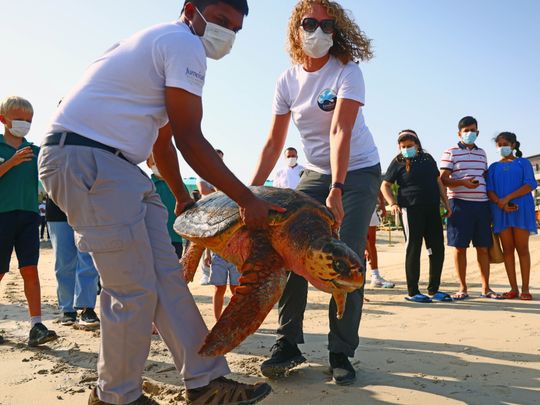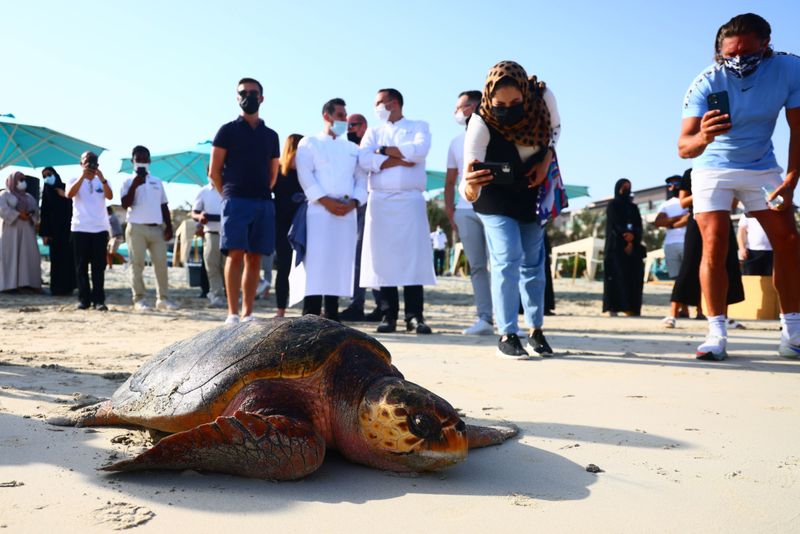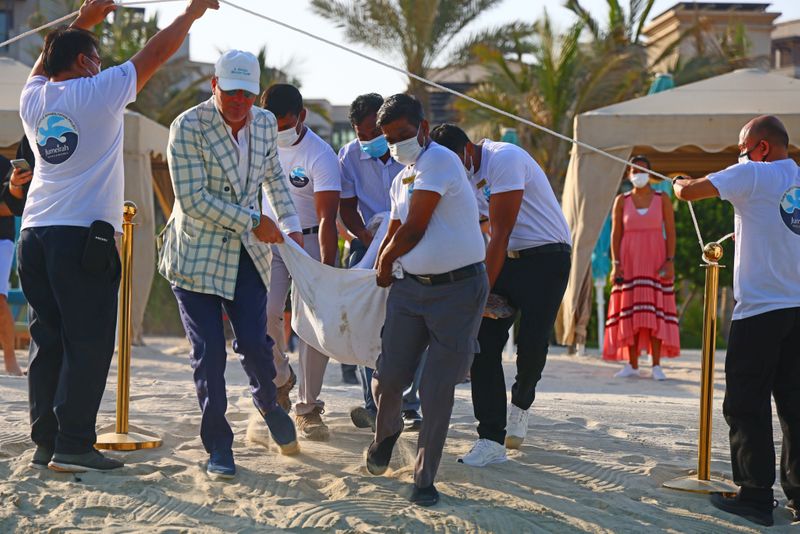
Dubai: Thirty turtles were released back into the sea near Burj Al Arab hotel here today by Jumeirah Group’s ‘Dubai Turtle Rehabilitation Project’ in celebration of World Sea-Turtle Day, observed on June 16 every year.
The animals had been cleared for release following a recovery period, accompanied by regular check-ups, monitoring of progress and medical care where necessary. The Hawksbill, Green and Loggerhead turtles were released from Jumeirah Al Naseem in Dubai.
Why were they rehabilitated?
The turtles released this year were each given care through a programme of veterinary examinations, administration of medication, surgical care where needed and consistent monitoring. Their injuries and cause for rehabilitation are due to cold-stunning during winter (a life-threatening reaction experienced by turtles when exposed to cold water for prolonged periods), plastic ingestion or injuries requiring surgery. Once all treatments are completed, the team relocates the animals to the Turtle Lagoon at Jumeirah Al Naseem as part of the final stage of their rehabilitation.

Worldwide threats
The release marks the day set aside to honour the importance of these creatures and their vital role in the balance of marine habitats. In light of the threats they face world-wide, due to loss of habitat, poaching, over-exploitation and pollution, Jumeirah said it was scaling up efforts to combat their declining numbers. The group has been successfully tending to sick or injured sea turtles since the inception of its dedicated programme in 2004, in collaboration with Dubai’s Wildlife Protection Office, the Dubai Falcon Hospital and the Central Veterinary Research Laboratory.
To date, almost 2,000 turtles have been returned safely to the Arabian Gulf, with annual rescue figures averaging over 100 turtles. Of the species tended to in the facility, the Hawksbill and Green turtles are the predominant, while Loggerhead and Olive Ridley turtles are also occasionally brought in.

Conservation in Abu Dhabi
Conservation efforts are also underway in Abu Dhabi at Saadiyat Island Resort. The team, led by the resort’s marine and environment manager, take measures to drive awareness on single-use plastic, protect turtle nests and hatching sites and preserve their natural habitat on Saadiyat Island’s protected beaches. The resort has successfully rescued and assisted in the rehabilitation of 250 juvenile Hawksbill turtles and has helped more than 700 hatchlings make their way safely back to the sea since its opening in 2018.
Supporting national targets
Barbara Lang-Lenton Arrizabalaga, director of the aquarium at Burj Al Arab Jumeirah, said: “Our efforts in this space are extremely important and in line with the mandate of the National Plan of Action for the Conservation of Marine Turtles in the UAE. Through our work with these majestic animals, we remain in complete support of the Ministry of Climate Change and Environment’s initiatives to further protect these creatures that are essential to the local natural ecosystem.”
Read more
She added: “The Hawksbills in particular play an irreplaceable role within the wider coral reef health. It is imperative that we continue to rehabilitate and protect these turtles, especially as they are faced with increasing threats to their nests, juveniles and adults, causing rapidly declining numbers.”








